Canadian History With New Eyes: The Dark Ages?
The Dark Ages & the French Wars of Religion Some time ago, I started to
Home / Historical Markers: Paris, Brantford & Area
I’m on a mission… in case you don’t know.
ChristianRoots Canada’s mission statement includes the intent to, ‘fill in the gaps of knowledge lacking in the Canadian Christian’s understanding of the true Christian foundations of Canada’.
Many of our followers await our discoveries as we unveil historical markers which uncover truths about Canada’s Christian foundations. This post showcases some historical markers which tell their own stories with very little help from us.
Note the period of our history in which some of these characters lived and performed their services. The DATES will be highlighted so you can make your own timelines. These giants left HUGE footprints on the landscape of Canada. There is a quote I learnt as a child: ‘Most footprints made on the sands of time were made by WORK shoes’.
These characters worked hard and most of them sacrifically. Many of them worked ‘as unto the Lord’. Many were visionaries and pioneers who never thought that they were building a name that will live on for a hundred years or more after their deaths..
Some were bold and fearless leaders… flawed people like we all are, but working for the good of others and their country.
May you be educated and inspired to search out the old paths. Be a Berean. Do your own research about these people.
Paris & Mount Pleasant
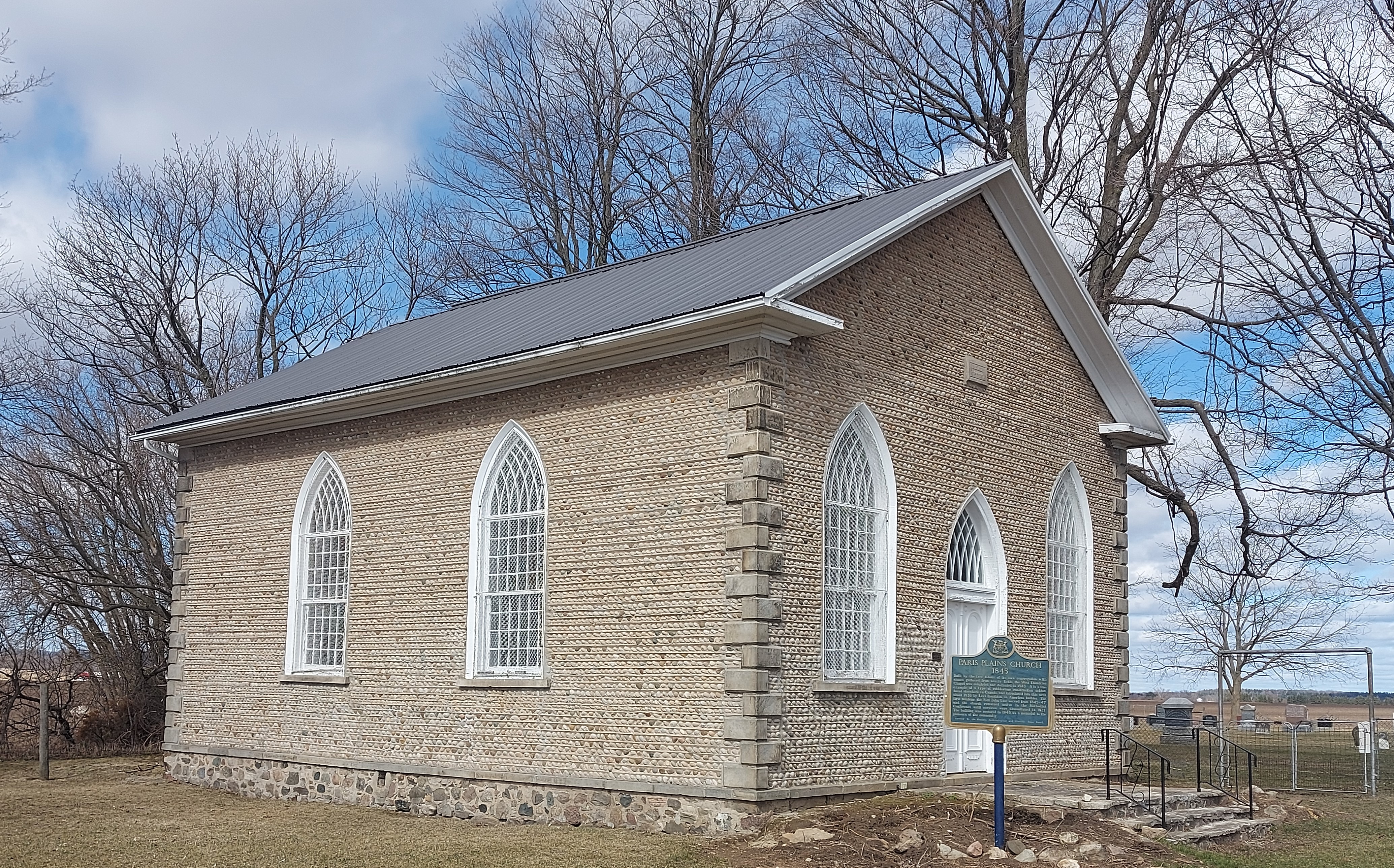
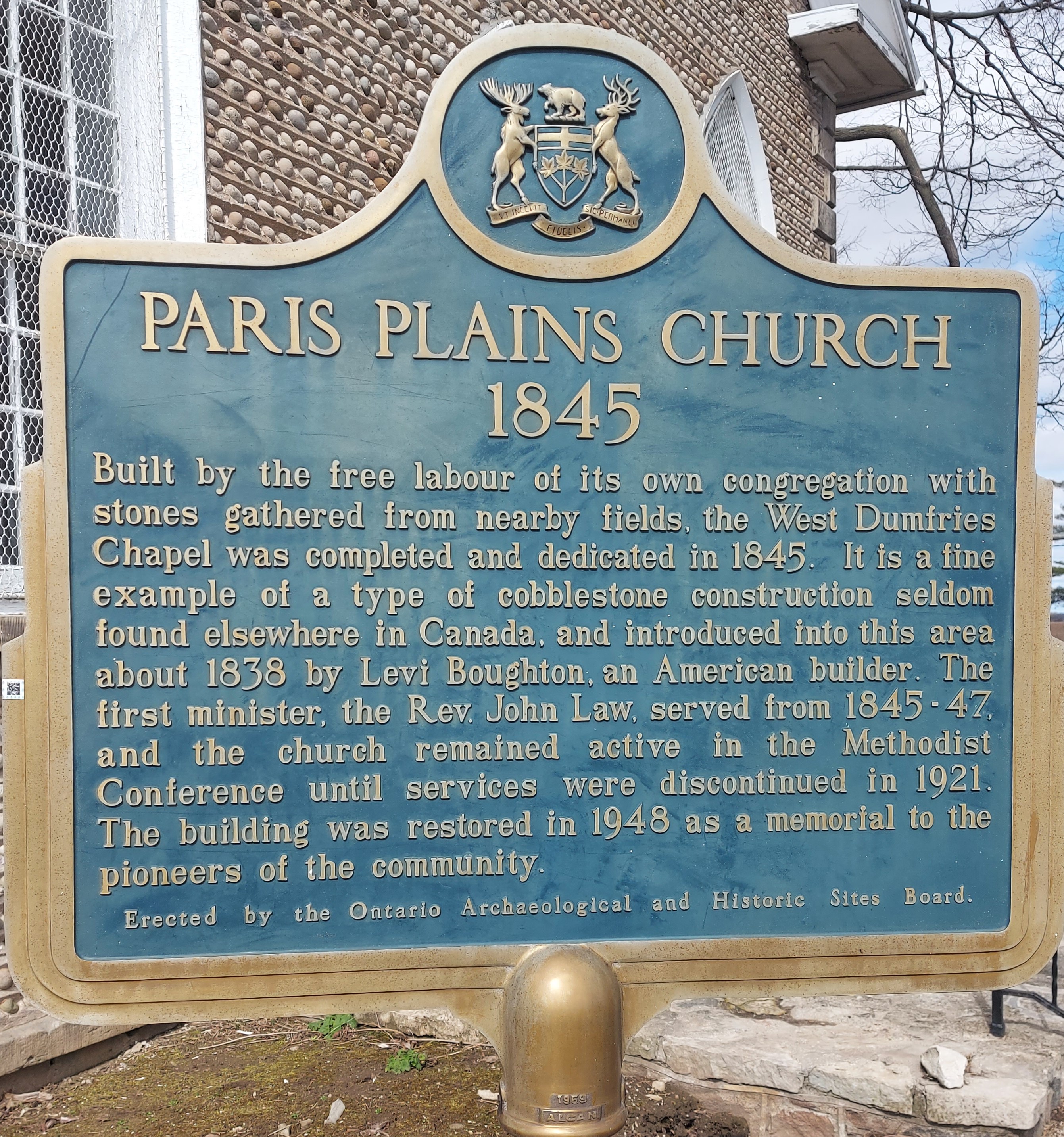
The Paris Plains Church, built in 1845, is unique in its class. It was a Methodist Church built by the congregants’ free labour using stones gathered in the surrounding fields. The style is called ‘cobblestone construction’. Services were discontinued in 1921, but the building was restored as a memorial to the community in 1948.
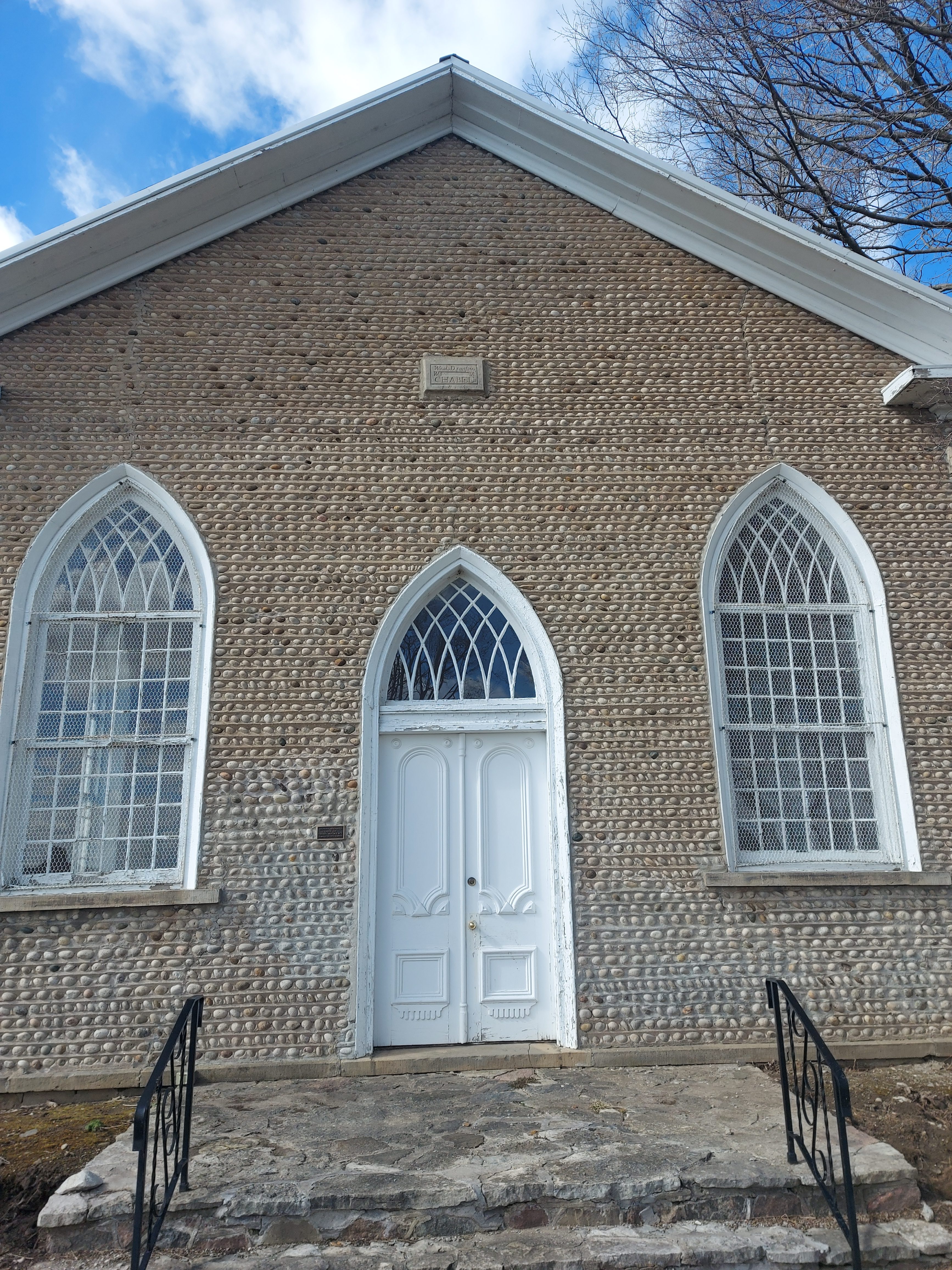
Front view of Paris Plains Church with commemorative block above the windows.
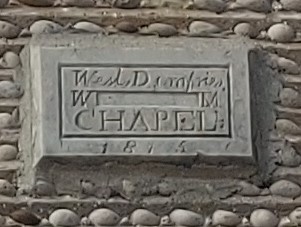
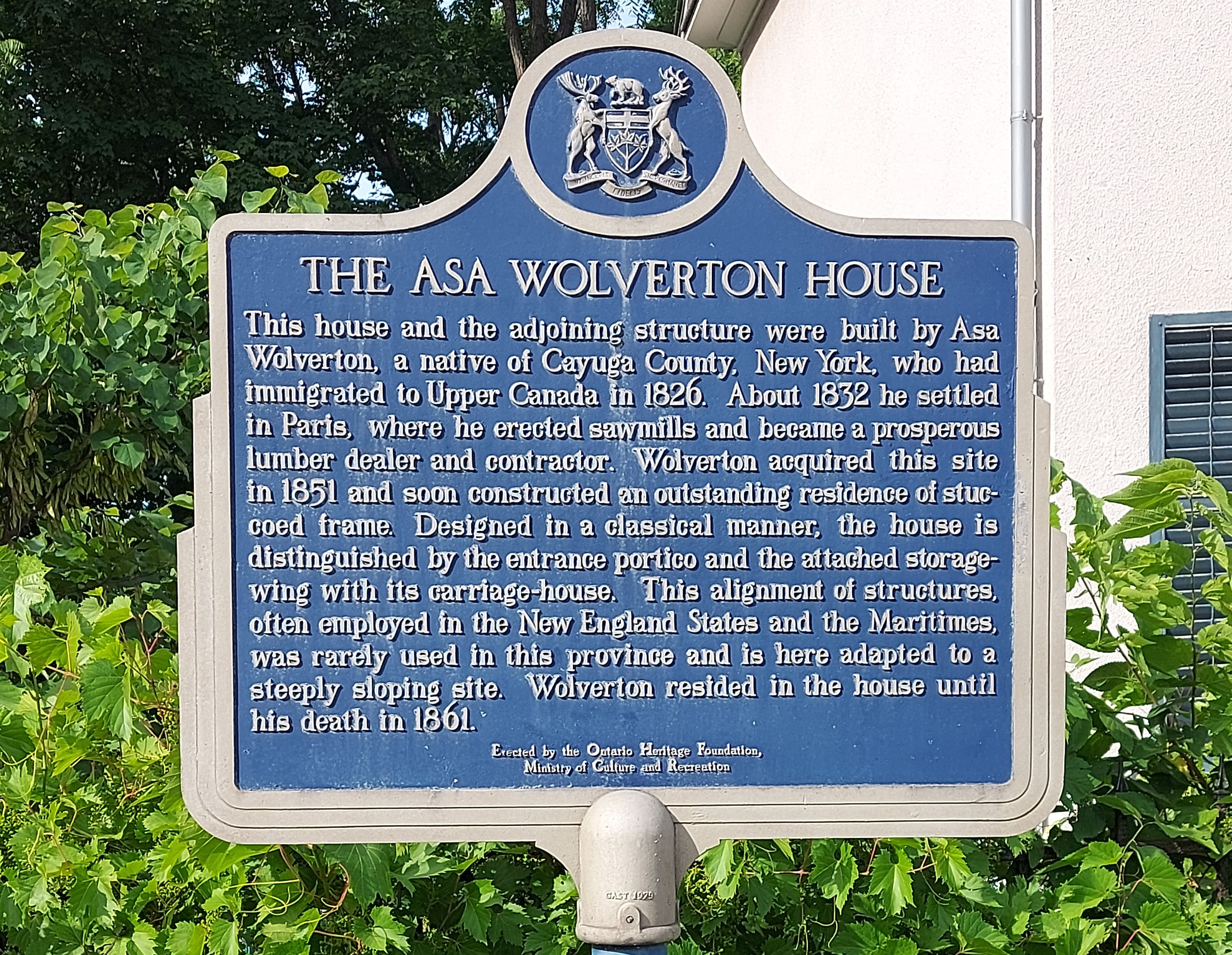
Never heard of him, but he was worthy of a historical marker in Paris. Very few people name their children Asa after Judah’s King Asa from the Old Testament. Asa Wolverton was a native of Cayuga Country in upstate New York, who immigrated to Paris in 1826. He built sawmills and was somewhat of a lumber baron. He died in 1861.
~~~~~~~~~~
Mount Pleasant
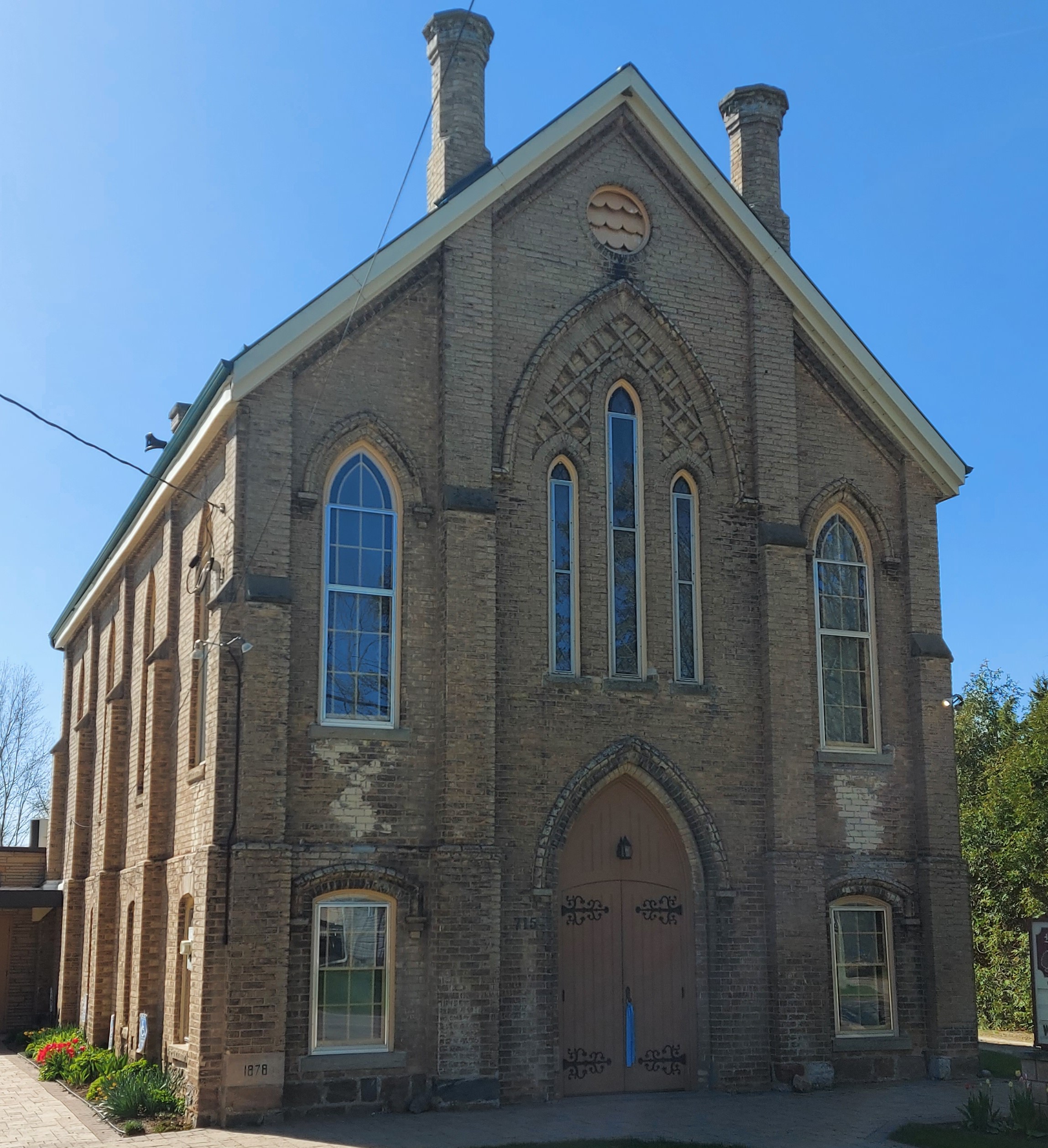
This is Mount Pleasant Presbyterian Church, established in 1878. It is still active today, 144 years later.
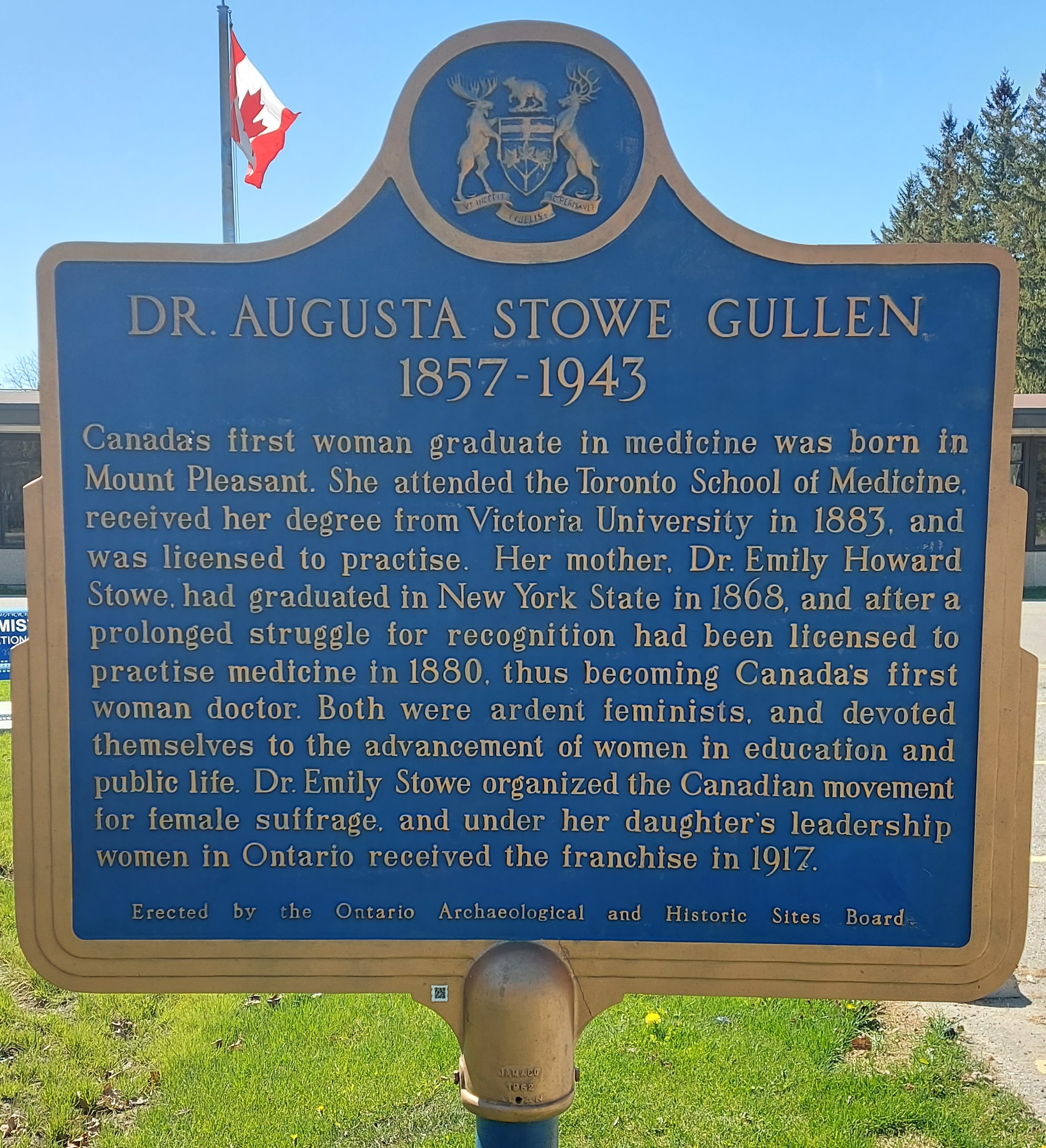
This historical marker is for trailblazer Dr. Augusta Stowe Gullen from Mount Pleasant – Canada’s first woman doctor to graduate from the Toronto School of Medicine, and licensed to practice medicine in 1880 (142 years ago).
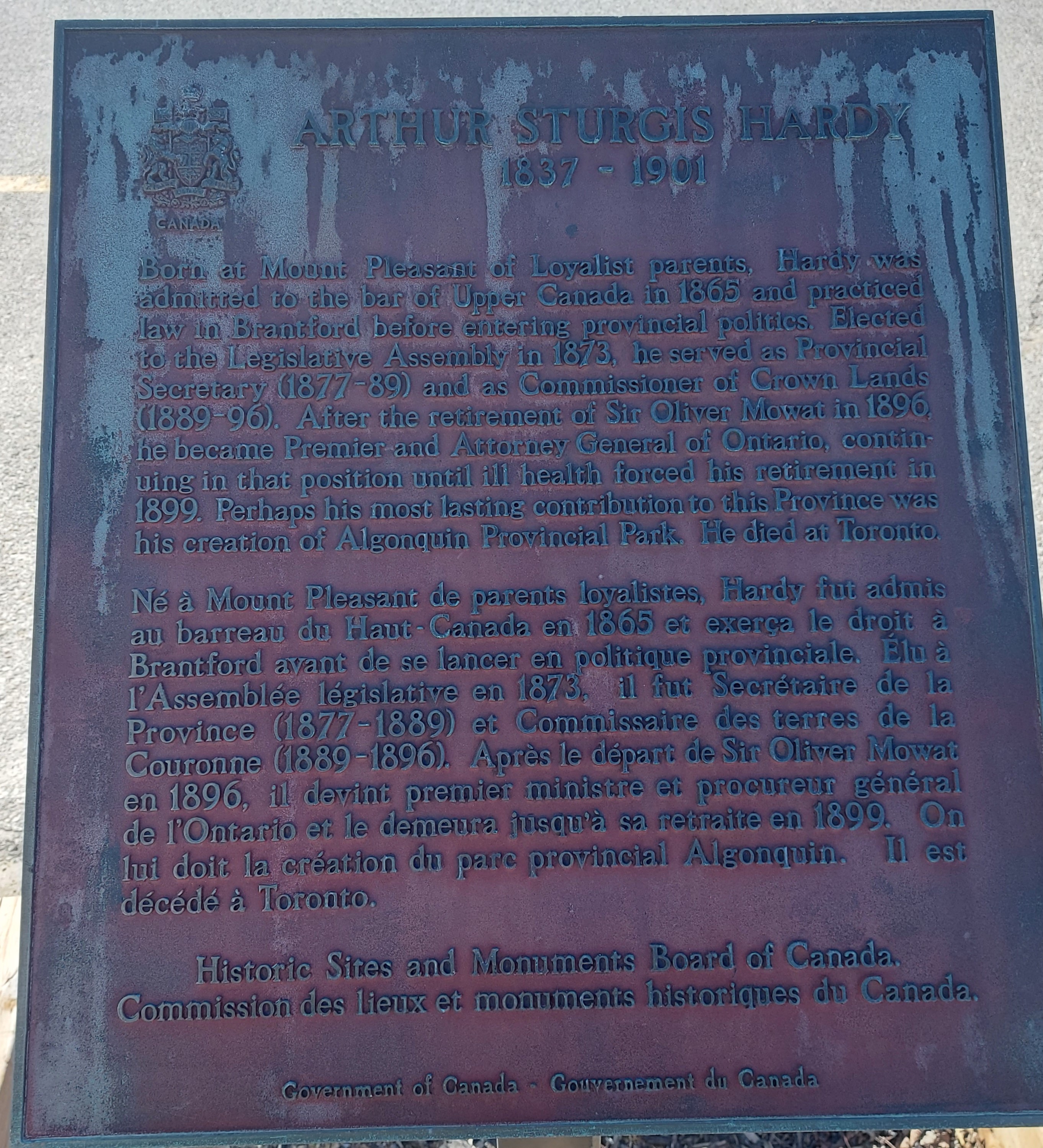
Arthur Sturgess Hardy was born in Mount Pleasant to a Loyalist family. He became a lawyer in 1865 and practiced law in Brantford before entering provincial politics. When Sir Oliver Mowatt retired in 1869, he became Premier and Attorney General of Ontario in 1899. His legacy? He created Algonquin Provincial Park.
Sir Oliver Mowatt was another Father of Confederation.
~~~~~~~~~~
More Fathers of Confederation
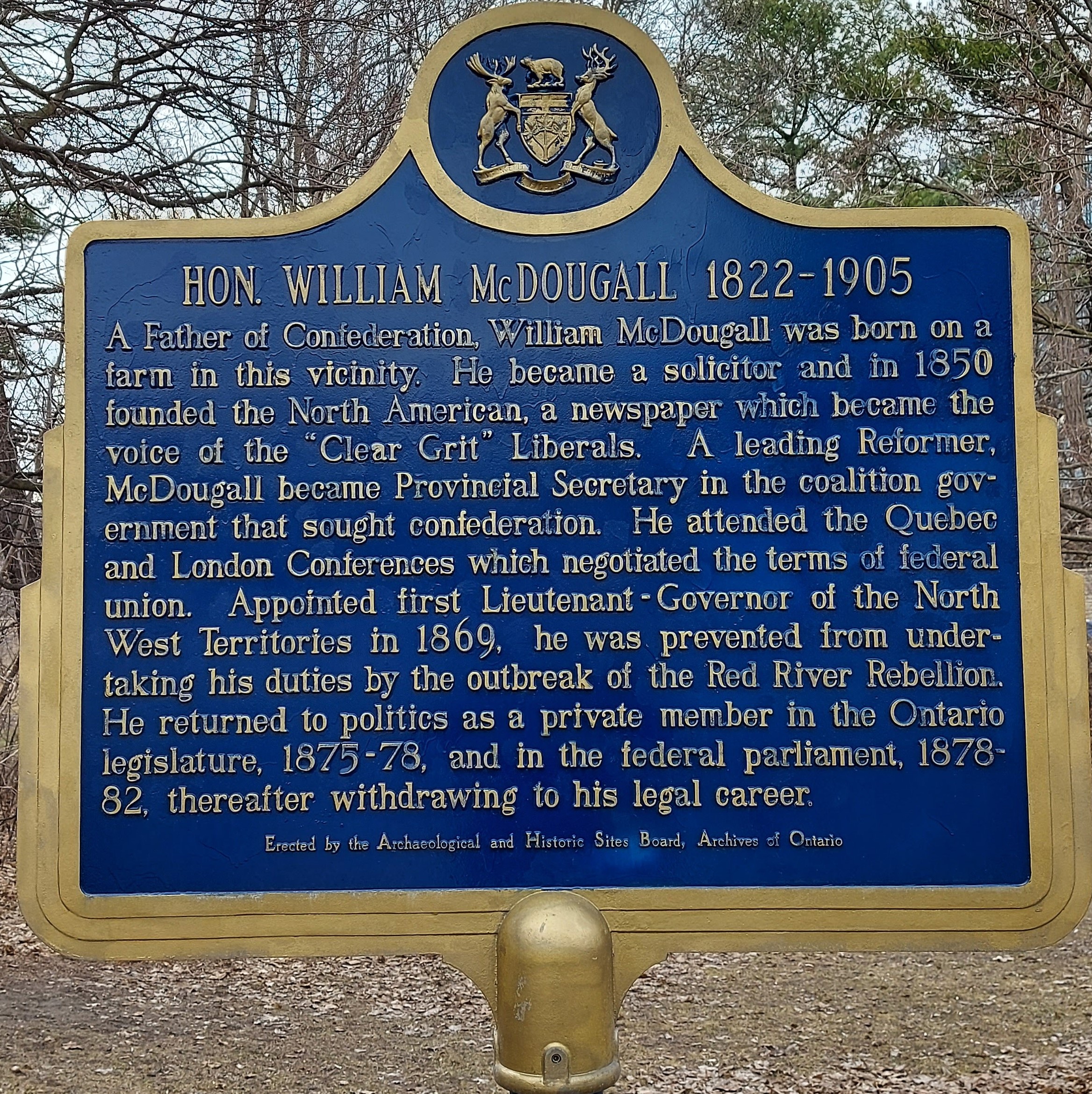
Father of Confederation, Hon. William McDougall, became a solicitor in 1850. He founded a newspaper called ‘The North American’, the voice of the Liberals when they were known as ‘The Clear Grits’. He was active in bringing reform to the legislative assembly of Upper Canada (Ontario) and was known as one of the ‘Reformers’. He became Provincial Secretary in the government seeking Confederation.
He attended both the Quebec and the London Conferences which hammered out the terms of the federation. He was the first Lieutenant Governor of the Northwest Territories in 1869, and was prevented from performing his duties by the Red River Rebellion. He continued in Provincial and Federal politics until 1882, after which he returned to private practice.
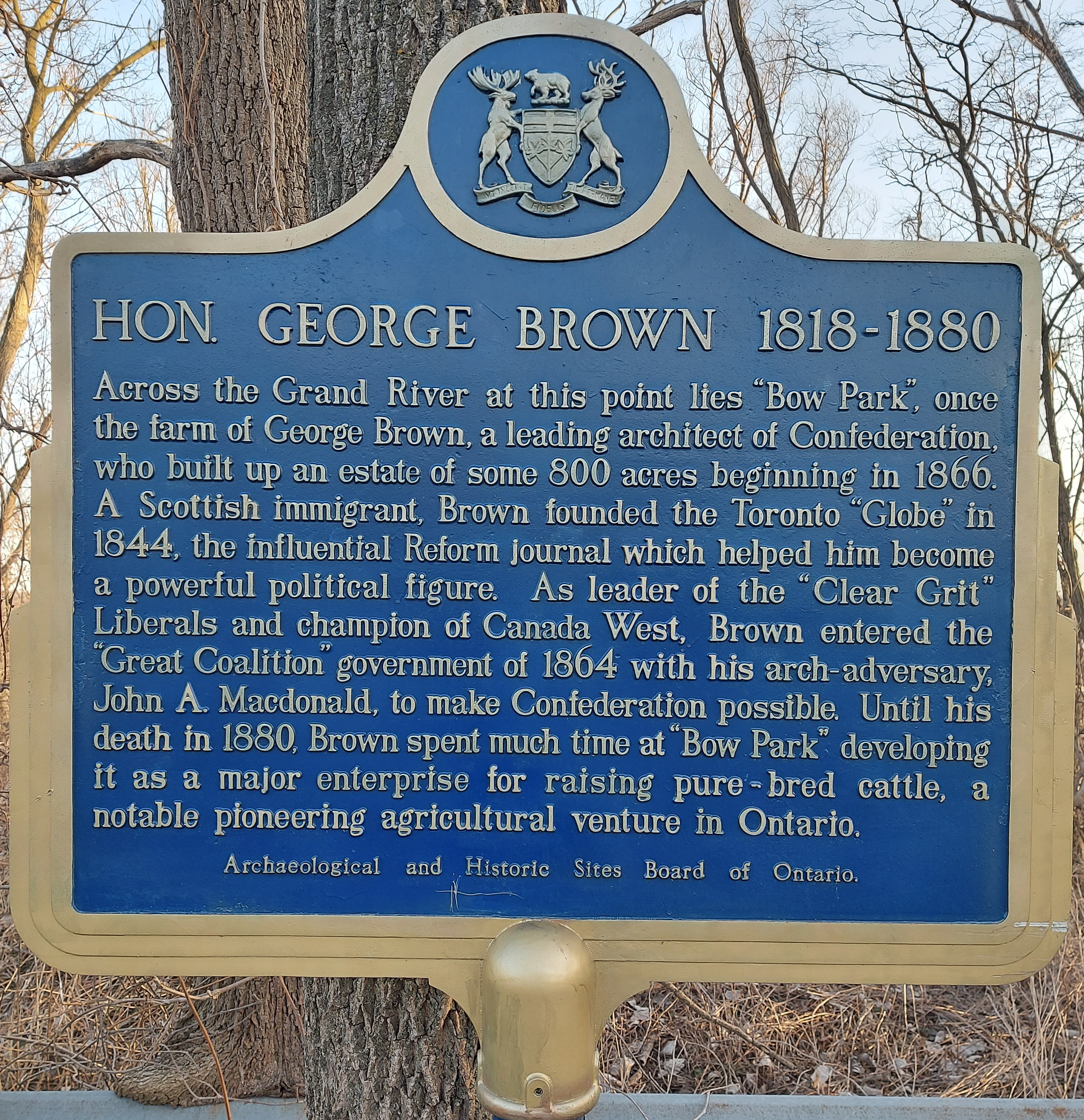
Marker in honour of Hon. George Brown, a Scottish Presbyterian who was also a Father of Confederation and the founder of The Globe newspapers, now known as ‘The Globe and Mail’. He is known as the leader of the ‘Clear Grit’ Liberals and champion of Canada West (Ontario). His ‘arch-adversary’ was John A MacDonald. George Brown set aside personal ambition and differences to form the ‘Great Coalition’ with Sir John A MacDonald in the interest of Confederation.
~~~~~~~~~~
A Premier of Ontario
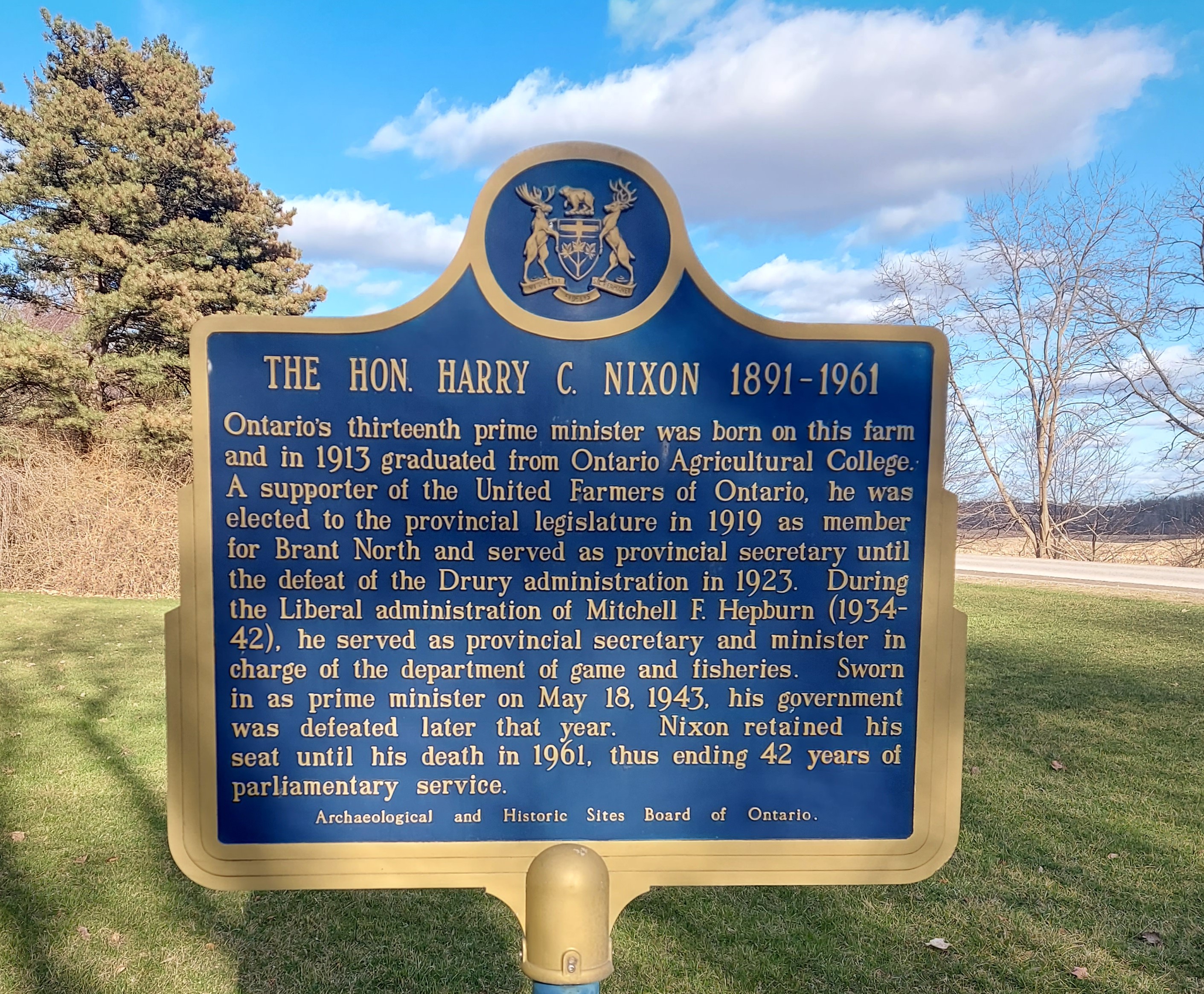
This is an interesting historical marker. Did you know that we had a Premier named NIXON?
Hon. Harry C Nixon was the short-lived 13th Ontario Premier, who graduated from Ontario Agricultural College in 1913 and was a supporter of the United Farmers of Ontario. He represented North Brant in the Provincial Legislature for 42 years. He was first elected in 1919. He served as Provincial Secretary until the Drury government was defeated in 1923.From 1934 -1942, he again served as Provincial Secretary, this time in the administration of Liberal leader Mitchell Hepburn . He became Premier in 1943 but his government was defeated later that year. He retained his seat in North Brant until his death in 1961.
~~~~~~~~~~
In Victoria Park…
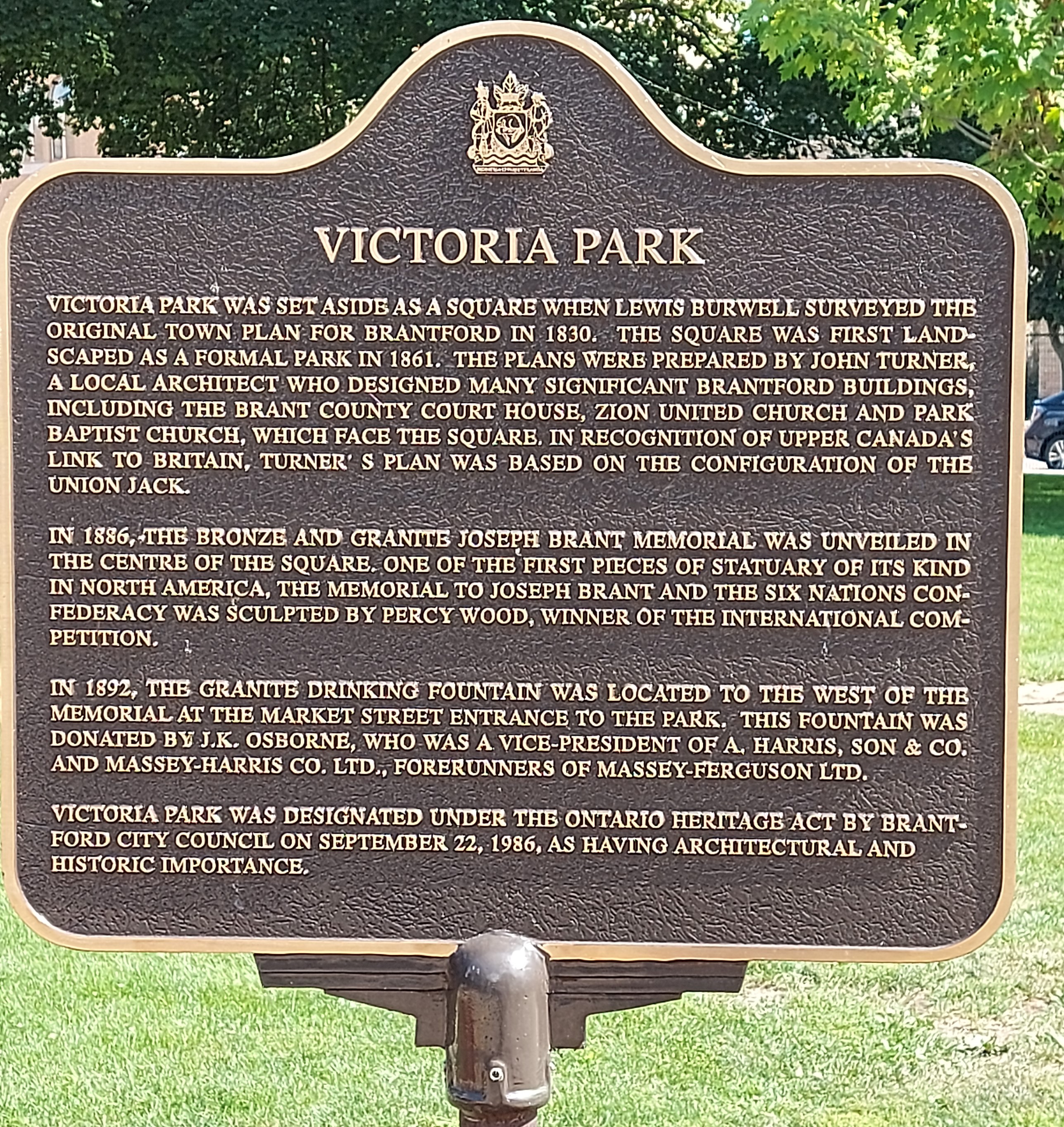
Victoria Park was set aside as a square when Lewis Burwell surveyed the original town plan for Brantford in 1830. The square was first landscaped as a formal park in 1861. The plans were prepared by John Turner, a local architect who designed many significant Brantford buildings including the Brant County court House, the Zion United Church, and Park Baptist Church which faced the square.
In 1886, the bronze and granite Joseph Brant Memorial was unveiled in the centre of the square. One of the first pieces of statuary of its kind in North America.
Some more information on Joseph Brant (Thayendanega)
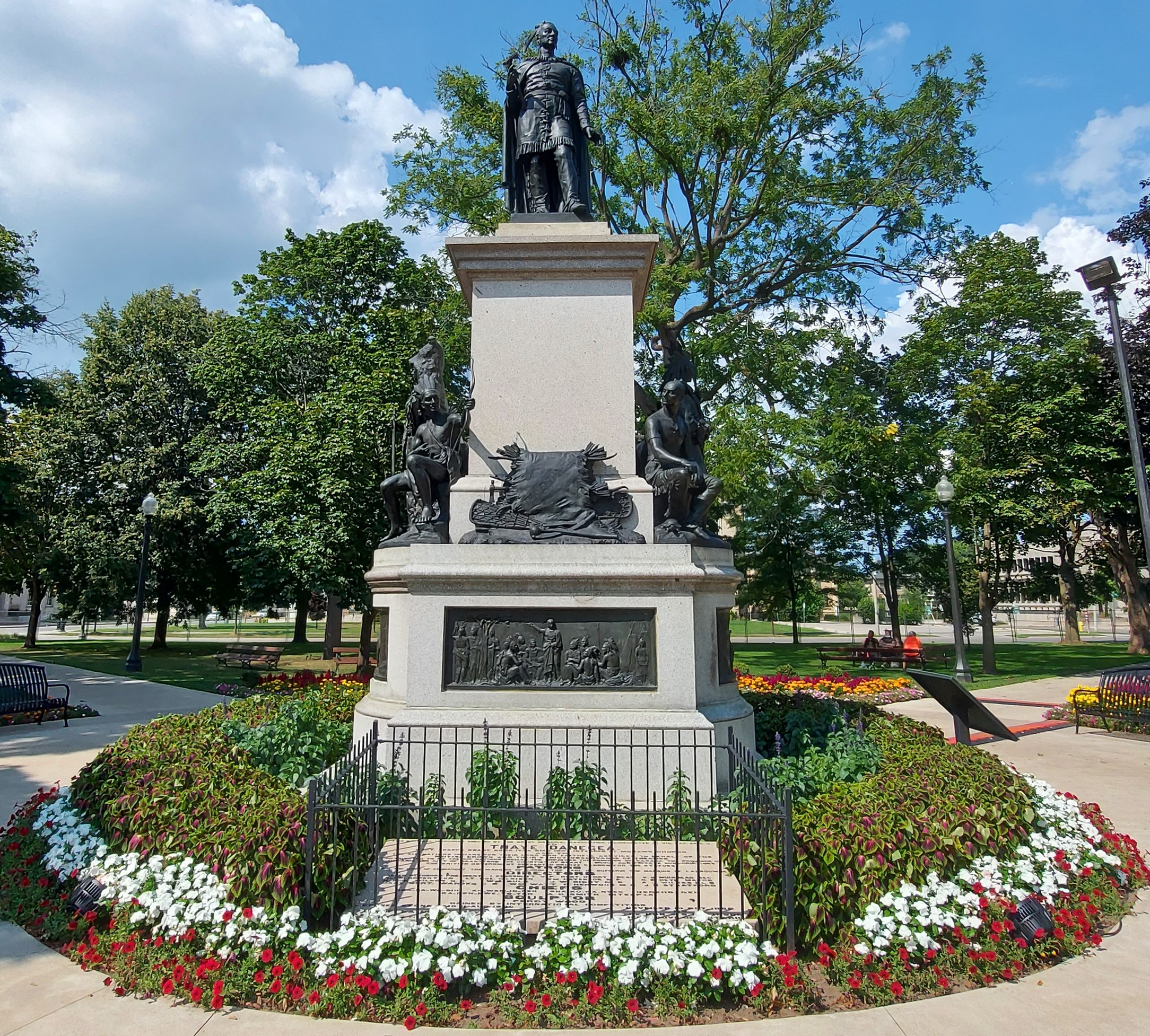
Joseph Brant’s statue overlooks Victoria Park in Brantford.
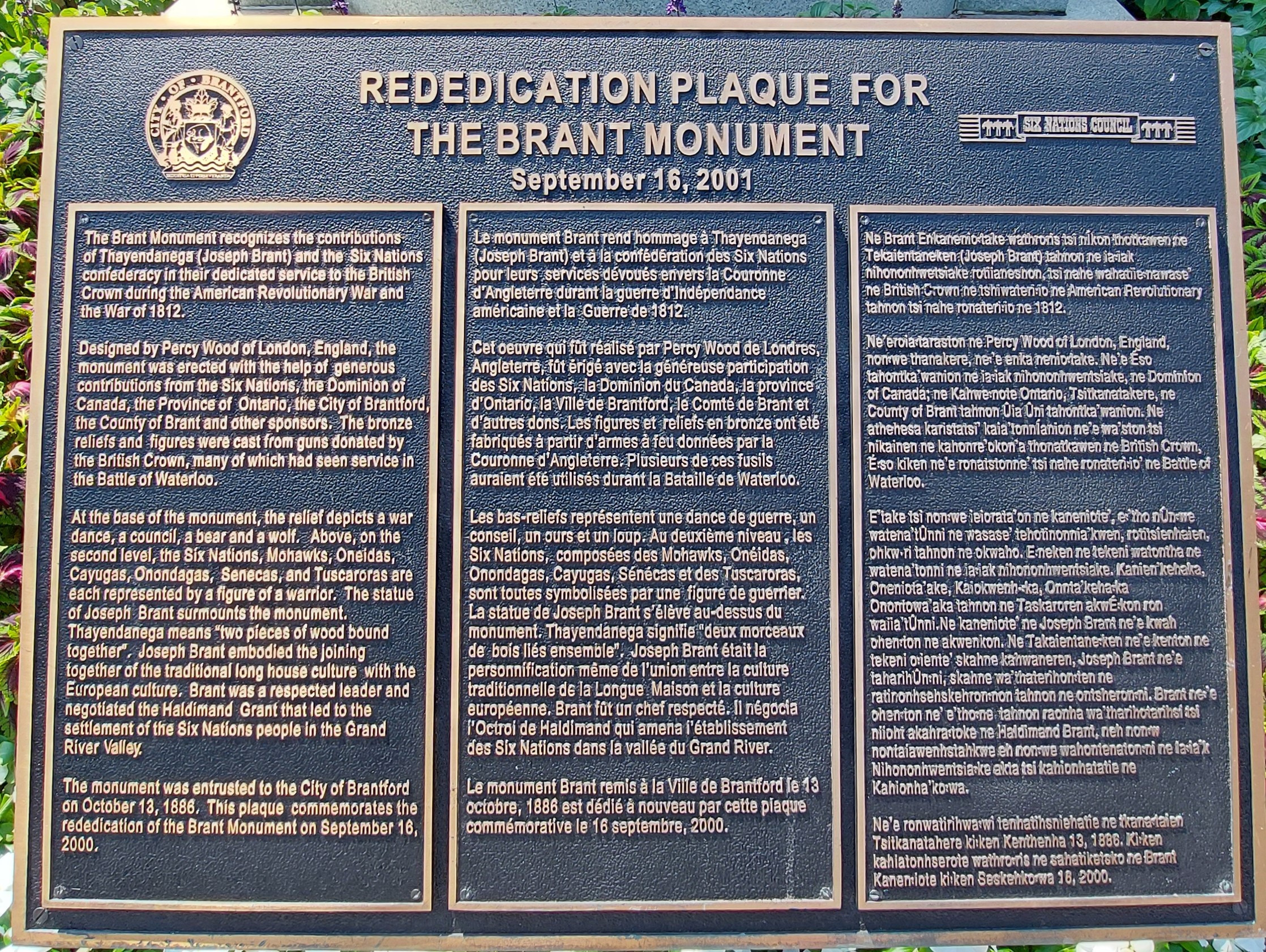
This ‘Rededication Plaque’ says it all. It reads in part,
The Brant Monument recognizes the contributions of Thayendanega (Joseph Brant) and the Six Nations Confederacy and their dedicated service to the British Crown during the American Revolutionary War and the War of 1812.
Designed by Percy Wood of London England, the monument was erected with the help of generous contributions from the Six Nations, the Dominion of Canada, the Province of Ontario, the City of Brantford, the county of Brant and other sponsors. The bronze relief and figures were cast from guns donated by the British Crown many of which had seen service in the Battle of Waterloo.
At the base of the monument the relief depicts a war dance, a council, a bear and a wolf. Above on the second level, the Six Nations, Mohawks, Oneidas, Cayugas, Onondagas, Senecas and Tuscaroras are each represented by a figure of a warrior. The figure of Joseph Brant surmounts the monument…
The monument was entrusted to the City of Brantford on October 13, 1888.
The plaque commemorates the rededication of the Brant Memorial on September 16, 2000.
Author’s Note: Lynette is the owner of ChristianRoots Canada. Blogger. Publisher. Course Creator. Passionate about Canadian History from the perspective of God’s Providence.
The Dark Ages & the French Wars of Religion Some time ago, I started to
In many places, like legislatures and schools, the Bible is considered ‘hate literature’. Counseling someone
Britain’s claim of Rupert’s Land by the Doctrine of Discovery, proved to be one of
Dominion Day had been a federal holiday that celebrated the enactment of The British North American Act which united four of Britain’s colonies – Nova Scotia, New Brunswick, Upper and Lower Canada (which became Ontario and Quebec), into a single country within the British Empire, and named that country The Dominion of Canada.